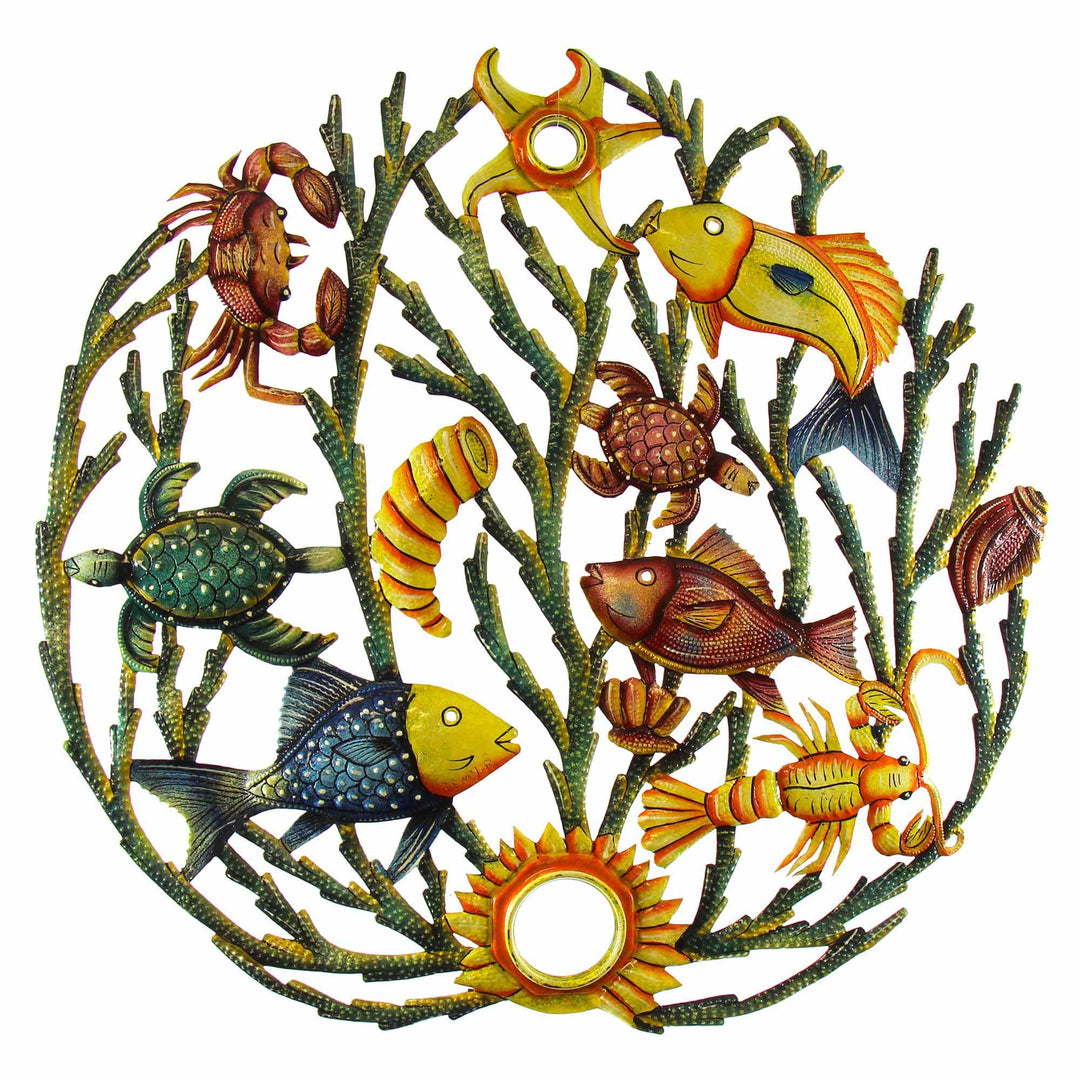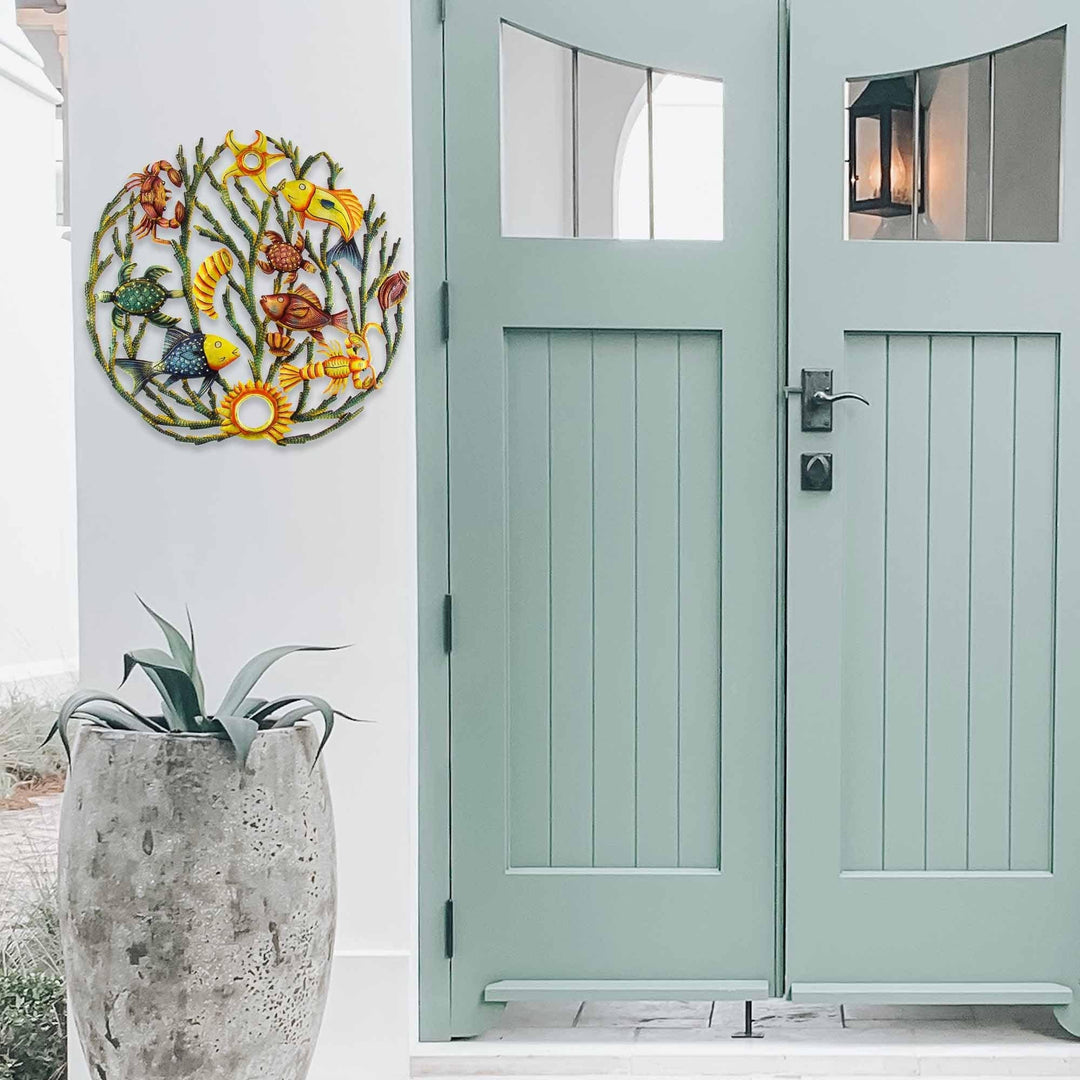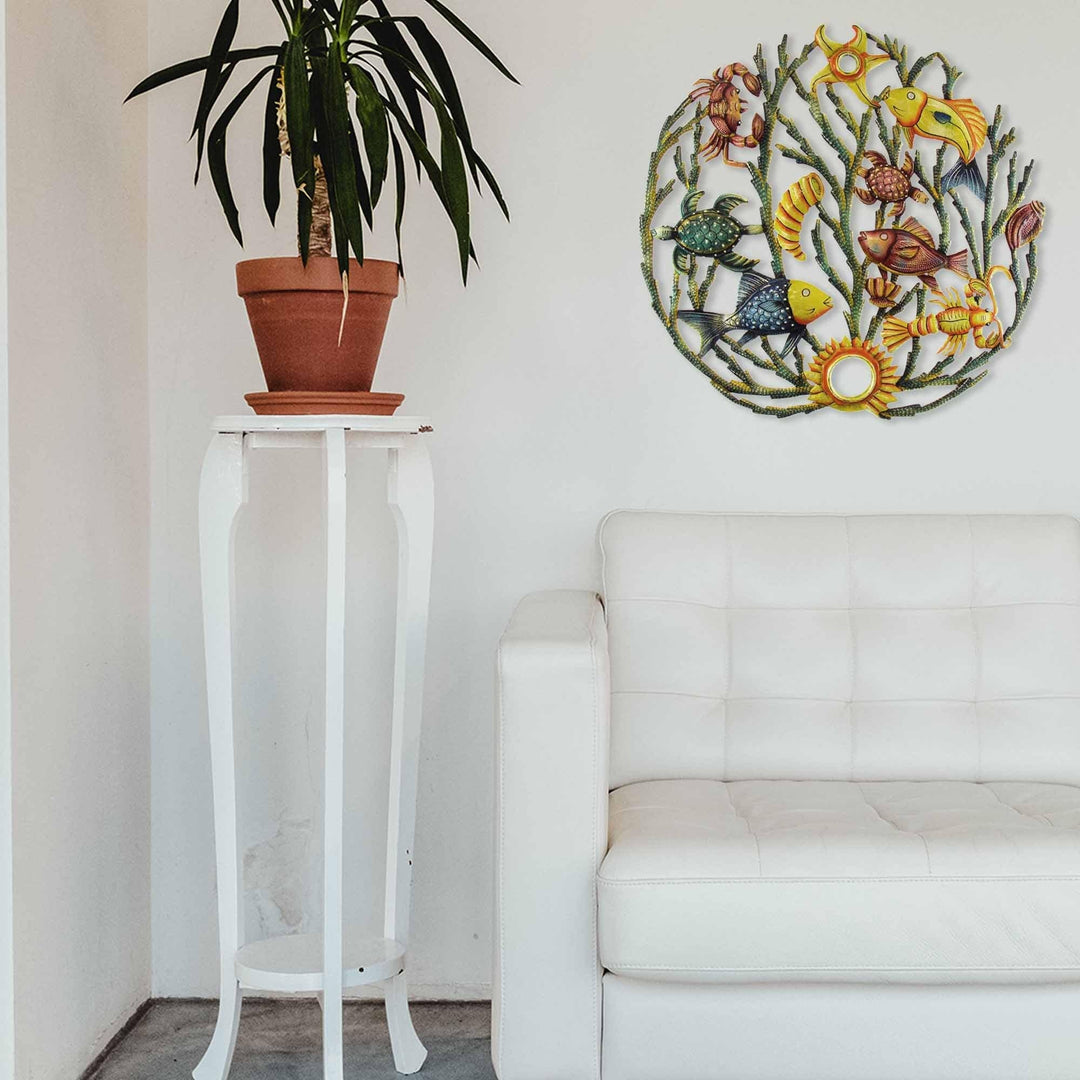

✓ Item added to cart
View Cart
Painted Sea Life Metal Wall Art
Sourced
Guarantee
Crafted from recycled 55-gallon steel drums by village artisans in Haiti, these stunning pieces of art are truly one-of-a-kind! The process of turning sheets of metal into beautiful art is all done by hand. Steel drums used to transport oil into the capital of Haiti are cut, the oil is burned off to clean the metal, and then flattened in order to create stunning, upcycled art. Suitable for Indoor or Outdoor Use.
- Type: Metal Wall Art
- Colors: Metallic
- Materials: Upcycled Steel Metal
- Finish: Painted
- Dimensions: Approx. 24" Diameter
- Care: If displaying outdoors it is recommended to spray with a clear lacquer once or twice a year, as prolonged exposure to the elements will cause rust.
- Hanging Instructions: To hang metal art simply use pin head nails in the many nooks and spaces available in the design. If nails are shiny, you may want to darken heads with a black marker to help nails visually disappear.
Given the handmade nature of this product please allow for minor variations. As the metal is recovered from recycled oil drums and colored through a burning process it will vary slightly in coloration. Typically the piece has a darkened steel patina. If handpainted, exact colors may vary, which speaks to the one-of-a-kind nature of each piece. Each piece of metal art whether painted or natural is coated with a layer of clear lacquer to help protect the metal.
* Due to the artisanal nature of this product, color and size may vary.THE STORY BEHIND THE PRODUCT

Artisan Organization:Croix des Bouquets
Country:Haiti
When you visit Croix des Bouquets, the area of town known for Haitian metal art in the capital of Port-Au-Prince, you are met with a cacophony of tink, tink, tink as ball peen hammers strike sheets of steel. The sheets are cut from steel drums colored by oil and other liquids the drums at one time held. The process of turning sheets of metal into beautiful wall art is all done by hand, from cutting holes that become edges of trees and leaves, to accenting each lizard with a texture of scales, to painting or lacquering the final design. The artists are proud of their work, signing the pieces on the back side, leaving a raised, reversed signature on the front."



















